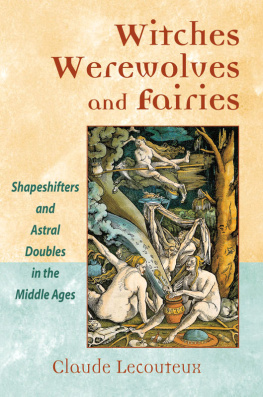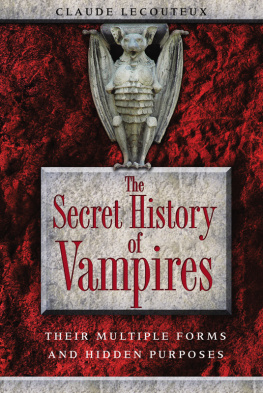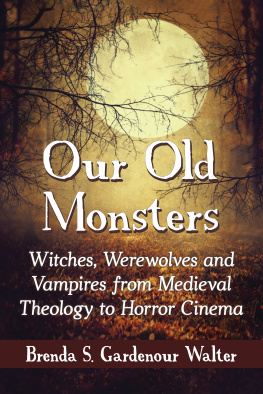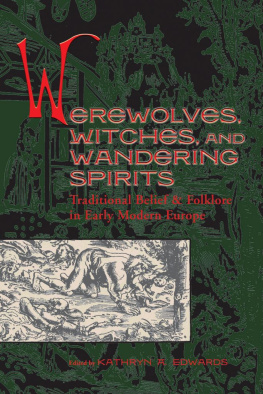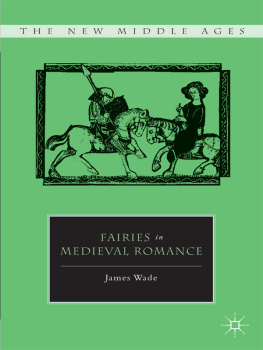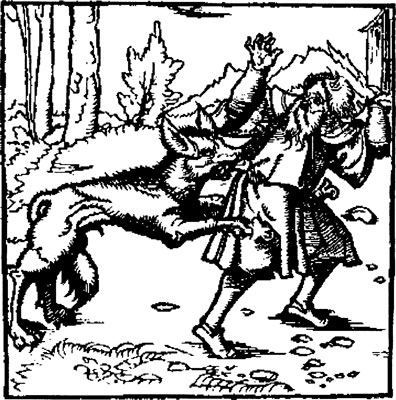
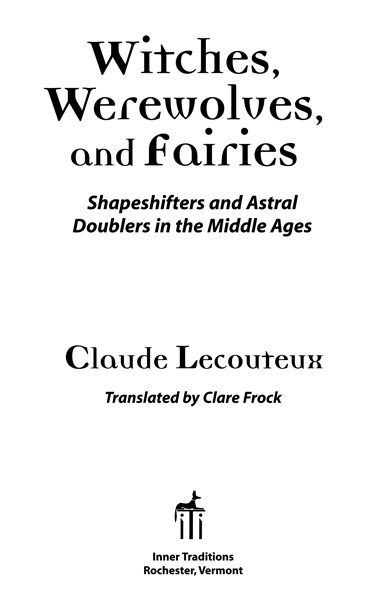
Acknowledgments

This book would not have seen the light of day without the help of my friends and colleagues Christoph Gerhardt (Trves), Sieglinde Hartmann (Frankfurt), and Harald Kleinschmidt (Stuttgart, now in Tsubuka, Japan), who provided me with documents that were inaccessible to me in France. May they be warmly thanked!
Contents

Foreword

I open my remarks with the paradoxical conclusion that, along with this remarkable study, we need to start reading the trilogy whose first two parts are called Fantmes et Revenants au Moyen ge (Imago, 1986) and Les Nains et les Elfes au Moyen ge (Imago, 1988). Claude Lecouteux spares no effort to show that our ancestors did not regard our concept of death withas our distressing ultramodern notions would have itsuch finality. In fact, if we go back to our cultures true sources, this notion is squarely refuted by all manner of ancient and medieval testimonies.
After decades of constant contact with ancient Scandinavian texts, I am still struck by the inanity of modern categories, dichotomies, and exclusions. This is not to say I give the brilliant comparative texts offered us by Claude Lecouteux (which are his peerless trademark) the power to veto opposing opinion, but they provide sufficient grounds to verify that this is a matter of something far different from simply the legacy of a unique culture. I will concede, given that we are told this repeatedly in this book, that our Old Norse sources, as Christianized as they may be, remain closer to a fundamental truth that has been slighted over the course of the centuries. This, of course, is what makes these testimonies valuable, as long as they are properly understood. Yet what clearly emerges out of their study is that their authors were simply incapable of drawing a clear line between this world and the hereafter, between life and death.
This does not imply that they were indifferent to what must be called a change in condition or status, or that they did not conform to what is an obviated observation, that is, the dauxi, the dead person, does not have the same type of reality as the lifandi, the living person. But the distinction does not lead to a dramatic change in our ideas of nothingness or non-being, words for which Old Norse simply does not have adequate terms! There is a mentality in which a dead person can come along at any moment and adopt the shape of the living, the living can animate the deceased, and a surprising (for us) movement is established between the two realms. This is taken to such an extreme that we often cannot know, when we are reading a certain saga or text from the Eddas, in just which realm we are wandering. Is the Poetic Edda Baldrs Dreams (Baldrsdraumar) to be added deliberately to the purely oneiric category, as their title could suggest, or is it necessary, instead, to view this level as the only admissible one, and to see clearly that an ontology is captured here at its very source? For this poems argument is not immaterial to the subject at hand: It is Odin himself who creates a woman seer so that she can tell him what happened to his son Baldur, who has recently died.
On the opposite end, we may ask if the impressive parade of ghosts in Eyrbyggja saga (The Saga of Snorri the Godi) is a gripping fabrication of a distant conventional theme that was taken from Latin hagiography (but then how did it happen that this was precisely the imagery that was retained?), or if it might go back to some homeless, nomadic archetype that takes us to the sources of the human condition.
For, as Claude Lecouteux repeatedly shows us, there is something derisory about our current pragmatism, realism, and materialism. There is something distressing in this absurd renunciation of what has been for so long the very material of our mental foundations. Lets be serious: Who among us, to paraphrase a quotation by Andr Malraux, would really accept nothingness and be happy with that? Who dares deny, in good anthropology and even in orthodox phenomenology, this life force (livskraf, asu, as it was said in Sanskrit, again something the Aesir, the Gods of the North, would borrow and turn to their own benefit) that justifies both our presence and the essential aspects of our behaviors? The utterly banal findings that each of us can make, hic and nunc, are absolutely counterproductive. What Teilhard de Chardin put so eloquently and substantially is that humanity is perfectly incapable of just going through the motions and sitting around idly when faced with the prospects of redemption that await it. And there is something precisely suicidal in the rages of negation that possess our technocratic millennium. It is still easy for us to find consolation by telling ourselves that the aforementioned furor affects only a fraction of humanity. For, as a Scandinaviana modern one this timehas proclaimed, life goes on; in truth, Knut Hamsun says, Life lives, men livet lever! This is certainly the point of view retained in Lecouteuxs book, without anyone feeling the express need to say it. It is that self-evident. We are only a phase, a moment in the great momentum that drives us, and there is nothing gratuitous about the race: It is situated on a trajectory that has existed forever, and whose end point, thank God, we cannot see and will not see. There is nothing axiomatic or naive about this declaration. For we have points of reference at our disposal, and this is where this book comes along to remarkably fulfill an expectation, to answer one of these crucial questions that exhaust us.
Out of these testimonies, Claude Lecouteux has chosen to emphasize one theme, which is certainly, truth be told, the most significant, the most clear, the most familiar overall, if we agree to become aware of it. It is the theme of the Double. There! He could just as well have discussed the androgyne or the dioscuri, which would have come back to the same thing (as he suggests this in passing, we are given hope that he may one day return to it). Furthermore, it is quite remarkable that his preferred cultural area for his examples is the same one where I believe investigations into the androgyne will be taken the furthest (Swedenborg, Almquist, Stagneliusall Swedish). The same is true for a study of twins and their images, from Freyr/Freyja to Fjrgyn/Fjrgynn by way of that couple in which, as Tacitus pointed out, the man, Njdr, has a womans name (Nerthus) and the woman a masculine name (Skadi).
The prevailing, well-researched idea hereand not only in the Germanic sources, I must noteis that each of us has a Double that is not only spiritual, but also (and this is where references to Old Scandinavian work wonders) potentially physical. It is a Double that has our form (hamr), accompanies us (fylgja), and gives us form (hugr), therefore annihilating all interruptions between any ambiguous occult world and the real. The demonstration of proof seems to me to be brilliantly carried out, and I leave to the reader the pleasure of following the authors argument. Let me clarify as well and thus broaden the debate a little: One can go beyond the context that the author, scrupulous scholar that he is, has set for himself. For it clearly seems to me that we are dealing here with one of the invariables of our human identity. I truly wish that the Church, in its determination to eradicate paganism by banishing into demonology all that too obviously escaped from its magisterium, had struggled against those representations that did not exactly coincide with its own concepts, though it also professed a kind of belief in a Doubleprecisely spiritual, this one: that guardian angel whom, very logically, Old Norse will call
Next page
